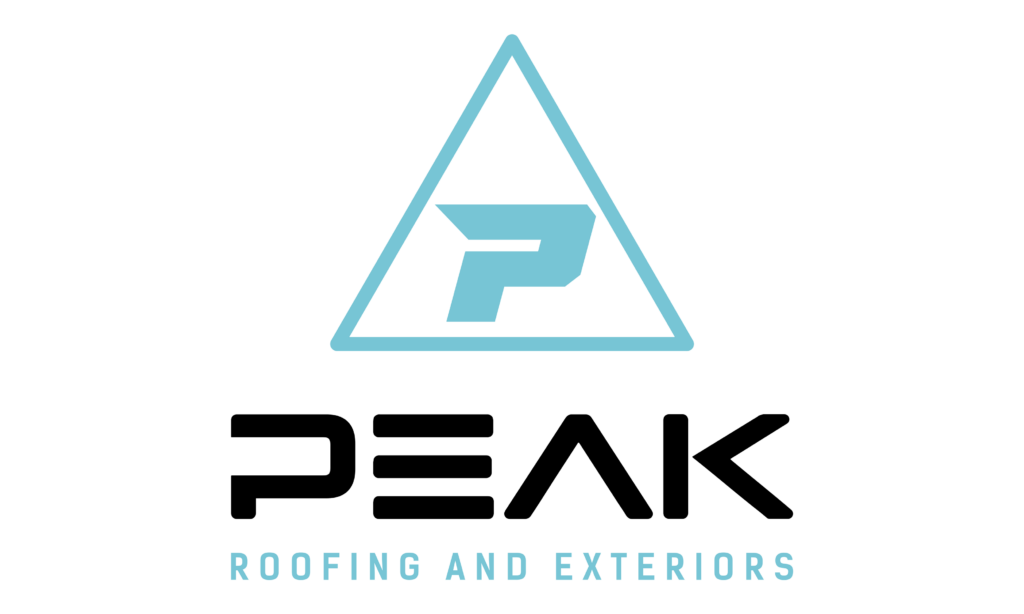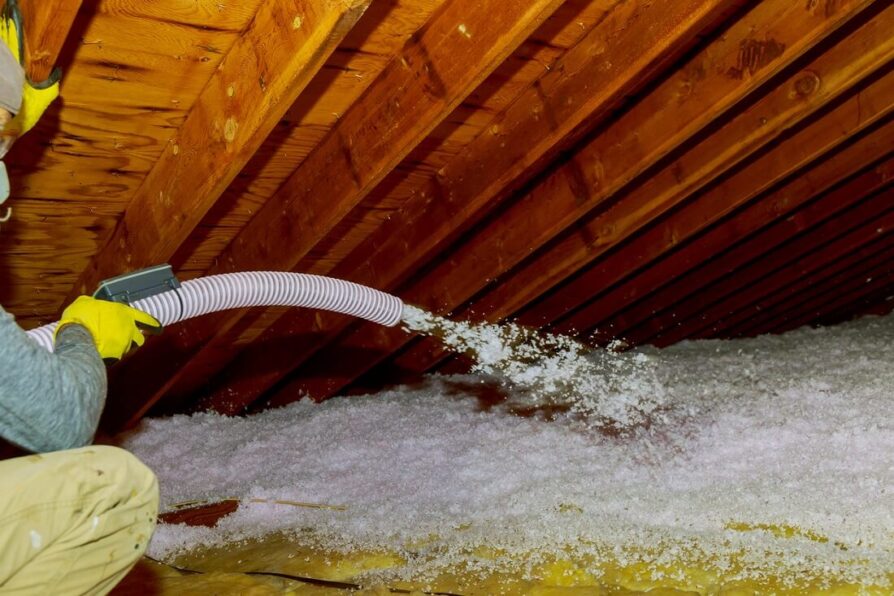Blown-in insulation, also referred to as loose-fill insulation, is a more modern approach to attic insulation. Instead of rolls or batts, loose-fill is composed of small particles — typically made from either fiberglass, processed cellulose, or a combination of the two. If you are building a home or planning a renovation project, replacing your attic insulation– or supplementing what is already there– with cellulose particles has a number of benefits that make it a more efficient, lower-cost alternative to batts.
Longevity Factors
Blown-in attic insulation will not last as long as conventional fiberglass insulation. This is because fiberglass does not break down over time while blown insulation is typically made from recycled materials that have definitive longevity expectations. However, it should be noted that fiberglass batts may become flattened in horizontal applications and slide out of place in vertical installations, so even the best fiberglass solution will not yield the same lasting benefits as blown-in cellulose coverage. Also, blown insulation can be expected to last between 20 and 30 years, often outlasting most conventional roof installations.
R-Values of Insulation
Insulation’s effectiveness is measured in R-value. This number equates to the amount of heat resistance provided in one inch of insulation. This can be confusing because fiberglass batts are rated for the thickness of the insulation as a single unit while blown-in insulation is rated by the inch. For walls, R-19 fiberglass batts give up .75 inches of R-value because the material has to be marginally compressed to fit the depth of a standard wall. When the installation is complete, there is very little difference between the R-value of blown-in versus fiberglass batts.
More Dependable Coverage
In truth, the operational R-value of blown-in insulation is typically a bit higher than other insulation types because blown particles are able to more completely fill voids, including spaces that are difficult to impossible to cover properly with batts or panels. Using a vertical wall as an example, fiberglass batts have to be cut and sometimes compressed in order to get around plumbing and electrical pipes and wiring. Normally, the batt is pressed under pipes and wires running horizontally in the wall and shoved to one side of the outlet and fixture boxes. This results in visible gaps that insulating batts do not cover as well as reduced R-value in every location where the insulation is compressed. By contrast, blown-in insulation is able to more dependably fill around utility material in the walls because the small particles are more versatile and don’t have to be compressed to accommodate the presence of other items in the wall.
Increase Attic Coverage
For horizontal attic installations, the first comparison is the fact that attic insulation can be blown in more abundantly, allowing you to boost your attic R-value by adding additional cellulose particles. Unlike walls, the space above your ceiling is typically left exposed above the joists, and that area can be filled with additional insulation– and often is in regions where temperatures fluctuate widely between the Summer and Winter. Similar to wall coverage, attic insulation also has to accommodate wiring, piping, and ductwork, further degrading the R-value available from fiberglass batts.
Will Not Wind Wash
Similarly, a phenomenon known as wind washing slowly strips conventional insulation of its R-value so that it becomes less efficient over the span of years. This happens when vented spaces are subjected to major or minor wind flow, depositing dust, dirt, and organic particles across insulating batts. Because blown insulation is composed of small, lightweight particles, it will absorb fewer airborne particles and thereby maintain the expected R-value for a longer period.
Fire Resistant
All insulation is at least partially resistant to fire, but fiberglass batts will succumb to high heat much faster than blown-in particulates. Some of the fire resistance of blown insulation is related to the way it is created and treated, but you should also consider that blown insulation has fewer areas for airflow, including the spaces around wiring and piping. By providing more uniform coverage, blown insulation also reduces the oxygen supply necessary for a fire to spread.
Preventing Pests and Rodents
Insects and rodents often make their homes in the gaps left by fiberglass batts. As they breed and expand the space they need to thrive, the insulation becomes further compressed and therefore less efficient. With blown-in attic insulation, gaps are filled and fewer places are available for rats, mice, and insects to build nests. Similarly, blown particles cannot be effectively compressed, so even when rodents do build nests they are limited in the size and frequency of nesting sites.
Moisture Elimination
Roof leaks and inefficient ventilation can cause fiberglass batts to accumulate moisture. This can result in the growth of mold and mildew that are harmful to your family. In some cases, holding excessive moisture can also result in ceilings sagging or staining, and may eventually lead to having to replace the drywall, possibly even the joists. Blown insulation is better able to absorb and eliminate moisture in your attic space, and that offers new levels of protection for your home.
Cost Considerations
Professionally blown attic insulation is more expensive than fiberglass batts at first glance. Special equipment is required, for example, and that gives the illusion of a higher cost ratio. But you also need to consider that loose-fill insulation requires a fraction of the labor, and can often be completed with only one or two workers, and in a fraction of the time required for a crew of workers to install batts. And because blown insulation is so much more efficient, there is a direct relationship between the cost of installation and return on investment. It typically only takes 2 or 3 years to recoup the cost of blown attic insulation.
Blown insulation costs more to install initially, but the benefits of doing so far outweigh the cost, and professionally blown loose fill will show much larger savings in the long term, even before you calculate the additional comfort, reduced health concerns, and improved functionality.
Peak Roofing & Exteriors
If you’re looking for an honest and experienced team that can handle your metal roofing project in Northwest Arkansas, Northeast Louisiana, or West Texas, look no further. Peak Roofing & Exteriors can take care of your home or business with quality and integrity. Contact us today and book a FREE inspection!

